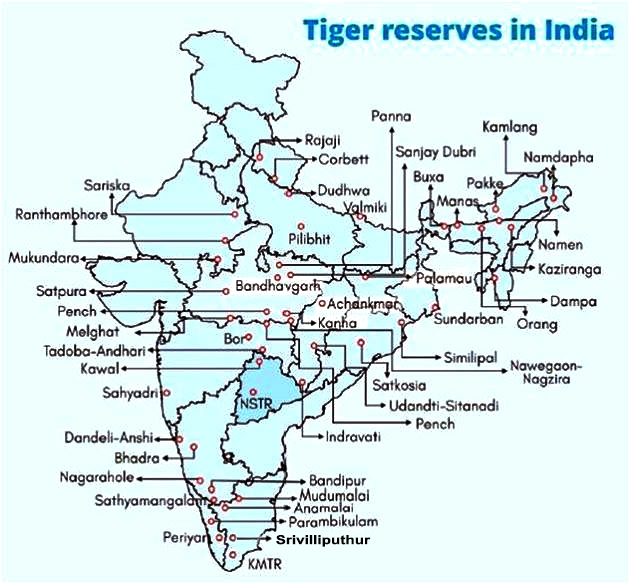Biodiversity & Environment
4th Asia Ministerial Conference on Tiger Conservation
- 22 Jan 2022
- 5 min read
For Prelims: Conservation Status of Tiger, Conservation Assured | Tiger Standards (CA|TS), Global Tiger Summit, Project Tiger
For Mains: Importance of Tiger Conservation and related Initiatives, Reasons for Loss of Biodiversity
Why in News
Recently, the 4th Asia Ministerial Conference on tiger conservation was held.
- India’s National Tiger Conservation Authority has also decided to introduce guidelines for the reintroduction of tigers that can be used by other Tiger Range Countries.
Key Points
- About:
- The conference is an important event for reviewing progress towards the Global Tiger Recovery Programme and commitments to tiger conservation.
- It was organized by Malaysia and Global Tiger Forum (GTF).
- India will facilitate Tiger Range Countries towards finalisation of New Delhi declaration for the Global Tiger Summit to be held in Russia later this year (2022).
- A “Pre-Tiger Summit” meeting was held at New Delhi in 2010, wherein the draft declaration on tiger conservation for Global Tiger Summit was finalised.
- India is one of the Founding members of the intergovernmental platform of Tiger Range Countries – Global Tiger Forum.
- Over the years, GTF has expanded its programme on multiple thematic areas, while working closely with the Government of India, tiger states in India and tiger range countries.
- Tiger Range Countries in GTF: Bangladesh, Bhutan, India, Cambodia, Nepal, Myanmar and Vietnam.
- Significance of Tiger Conservation:
- Vital in Regulating Ecological Processes:
- Tigers, the top predators in the ecosystem, are vital in regulating and perpetuating ecological processes.
- Forests are known to provide ecological services like clean air, water, pollination, temperature regulation etc.
- Tigers, the top predators in the ecosystem, are vital in regulating and perpetuating ecological processes.
- Maintaining Food Chain:
- It is a top predator which is at the apex of the food chain and keeps the population of wild ungulates (primarily large mammals) in check.
- Thus, Tiger helps in maintaining the balance between prey herbivores and the vegetation upon which they feed.
- Vital in Regulating Ecological Processes:
- Conservation Status of Tiger:
- Indian Wildlife (Protection) Act, 1972: Schedule I
- International Union for Conservation of Nature (IUCN) Red List: Endangered.
- Convention on International Trade in Endangered Species of Wild Fauna and Flora (CITES): Appendix I.
- TIger Population in India:
- India is home to over 70% of the tiger population globally.
- India is home to 53 tiger reserves spread across 18 states and the last tiger census of 2018 showed a rise in the tiger population.
- Guru Ghasidas (Chattisgarh) is the 53rd Tiger Reserve.
- India has achieved the remarkable feat of doubling the tiger population in 2018 itself, 4 years ahead of the targeted year 2022 of the St. Petersburg Declaration on tiger conservation.
- Related Steps taken:
- Conservation Assured | Tiger Standards (CA|TS):
- 14 Tiger Reserves in India have already been awarded with international CA|TS accreditation and efforts are on to bring in more Tiger Reserves under CA|TS accreditation.
- Project Tiger:
- It is a Centrally Sponsored Scheme of the Ministry of Environment, Forests and Climate Change (MoEFCC) launched in 1973. It provides havens for tigers in the country’s national parks.
- Budgetary Allocation:
- The budgetary allocation for tiger conservation has increased from Rs 185 crore in 2014 to Rs 300 crore in 2022.
- Helping Frontline Staff:
- The Frontline staff, which is an important pillar of tiger conservation, have extended Rs 2 lakh life cover to each contractual/temporary worker under e-Sharm, a recent initiative of the Ministry of Labour and Employment and Rs 5 lakh health cover under Ayushman Yojana.
- Conservation Assured | Tiger Standards (CA|TS):





